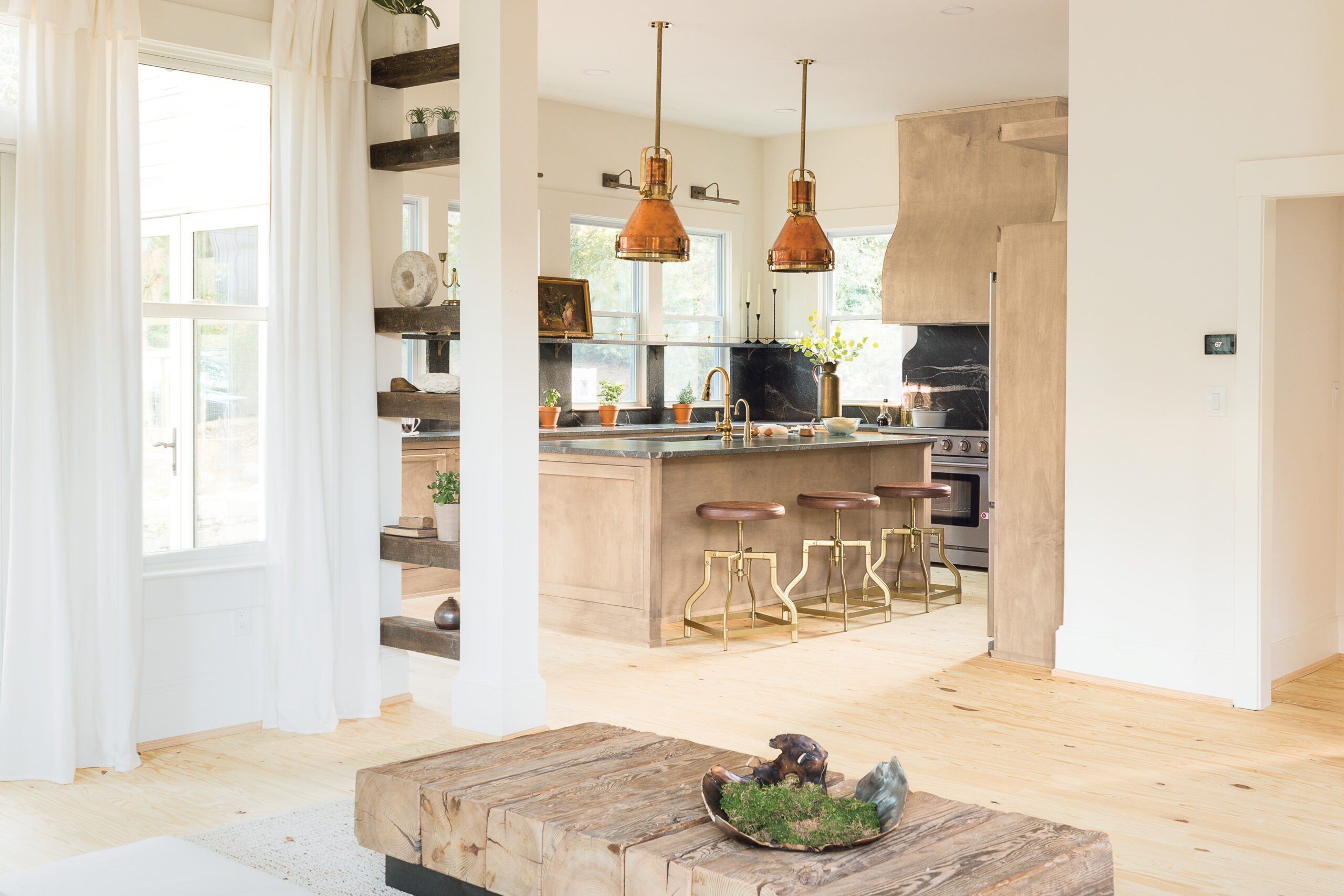Some say you don’t choose a house; the house chooses you. That sense of connection, and destiny, is very real for Jonathan and Kysha Hehn, proud stewards of the house built by voting-rights advocate Luther Judson Price more than a century ago. On their very first walkthrough, Kysha saw past the peeling paint, rotting wood, and collapsed ceilings and had a strong intuition that the house was special, though she had yet to learn why. Once the Price history came to light, she and Jonathan knew they wanted their family to be part of preserving the house’s legacy.
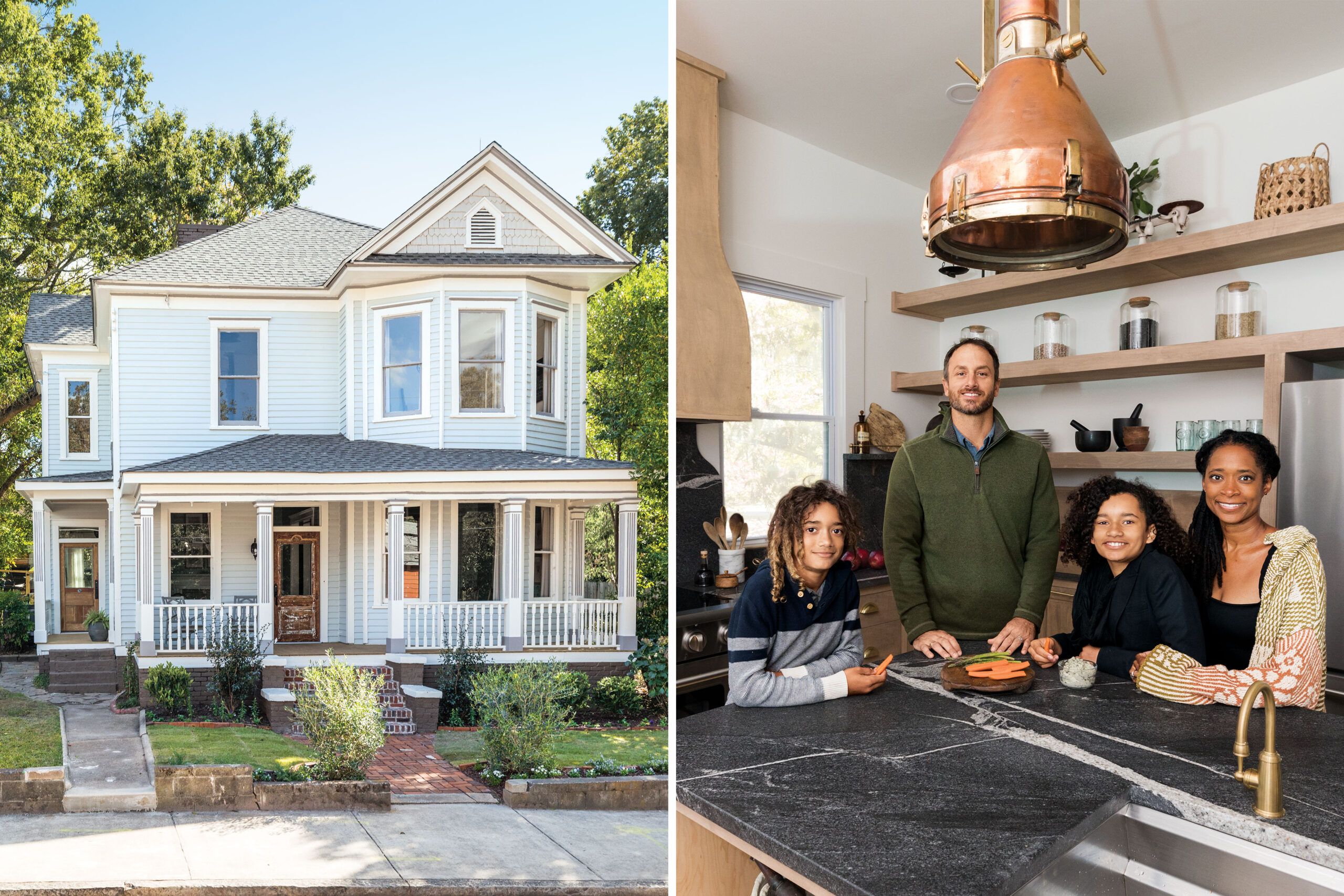
For the Hehns, and their children, Alivia Sage and Joia, the eight-month renovation of the 1890s house is now complete. The project brought with it treasured moments of learning about Price’s history intertwined with some challenging decisions about the construction, which This Old House documented as part of its 44th television season. “There were so many jigsaw pieces,” says Kysha of figuring out what spaces to keep and what to reimagine. “We were able to look at all the pieces and ask ourselves, What do we actually want? It was really beautiful the way the process unfolded.”
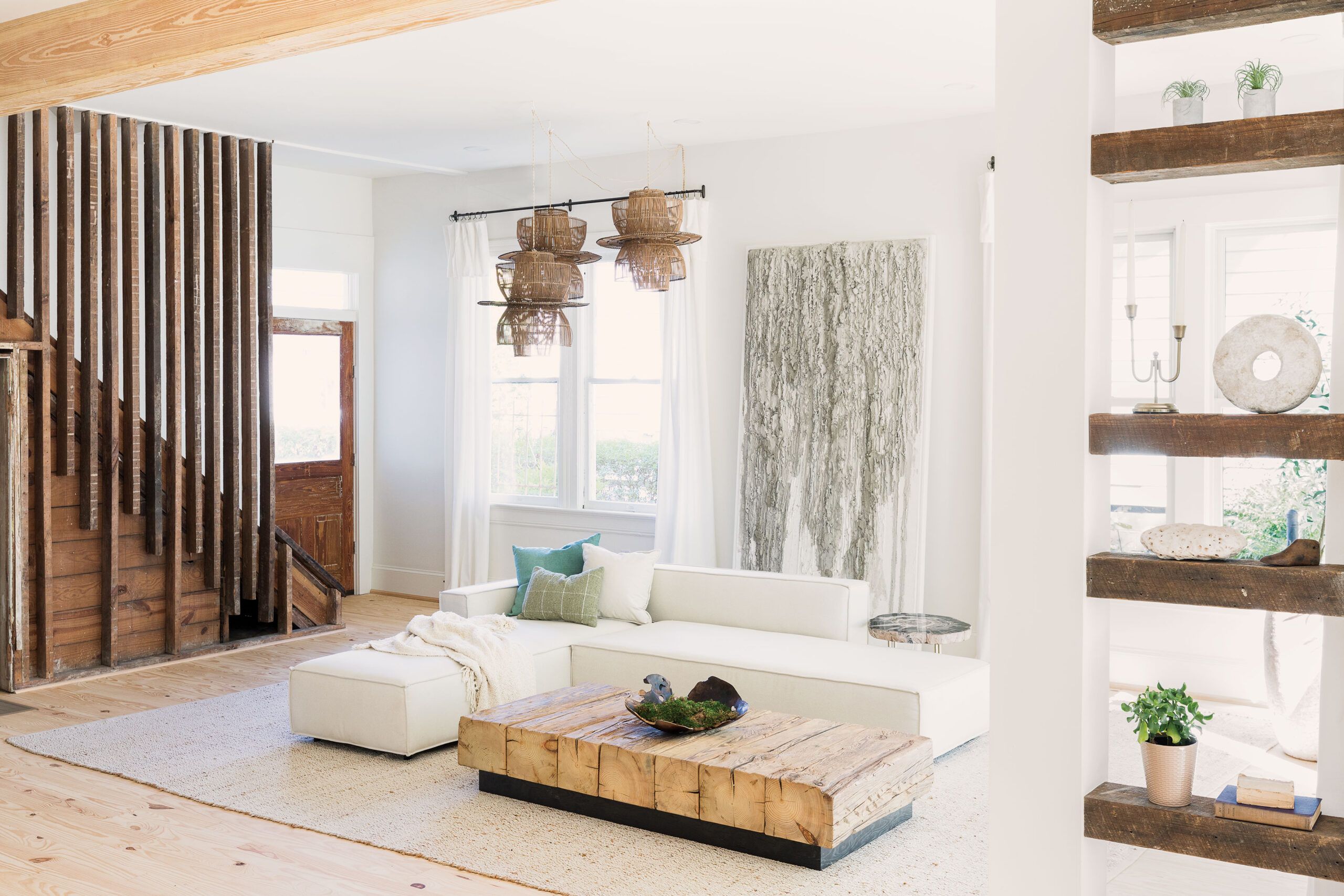
The Hehns’ vision was to keep the house’s history on display while rebuilding what couldn’t be saved. Today, the front half of the house retains the footprint and surviving features of the Price home, but builder Jerry Davis had to rebuild the rear after he found that one of the existing additions had sunk 6 inches due to wood rot. Davis, who also lives in South Atlanta, saw past the challenges: “We have done a lot of old houses, but this one was completely different because everybody knows who the house belonged to and the significance. Because of the Price legacy, the project meant that much more to me.”
With the path cleared for reimagining the space in the new addition—built with two separate foundations to address site issues, including soil erosion—the Hehns could carve out the kind of family space, they really wanted: an open-plan kitchen and family room with backyard-facing windows and doors. “I like that people seated at the island can look out at the backyard,” Kysha base cabinets and open shelves, honed-granite countertops, and open produce bins that hark back to Price’s general store echo other natural and organic elements in the house. A pair of copper-and brass pendant lights salvaged from a ship, brass bin pulls, and a granite shelf with a brass gallery rail along the windows add a period feel.
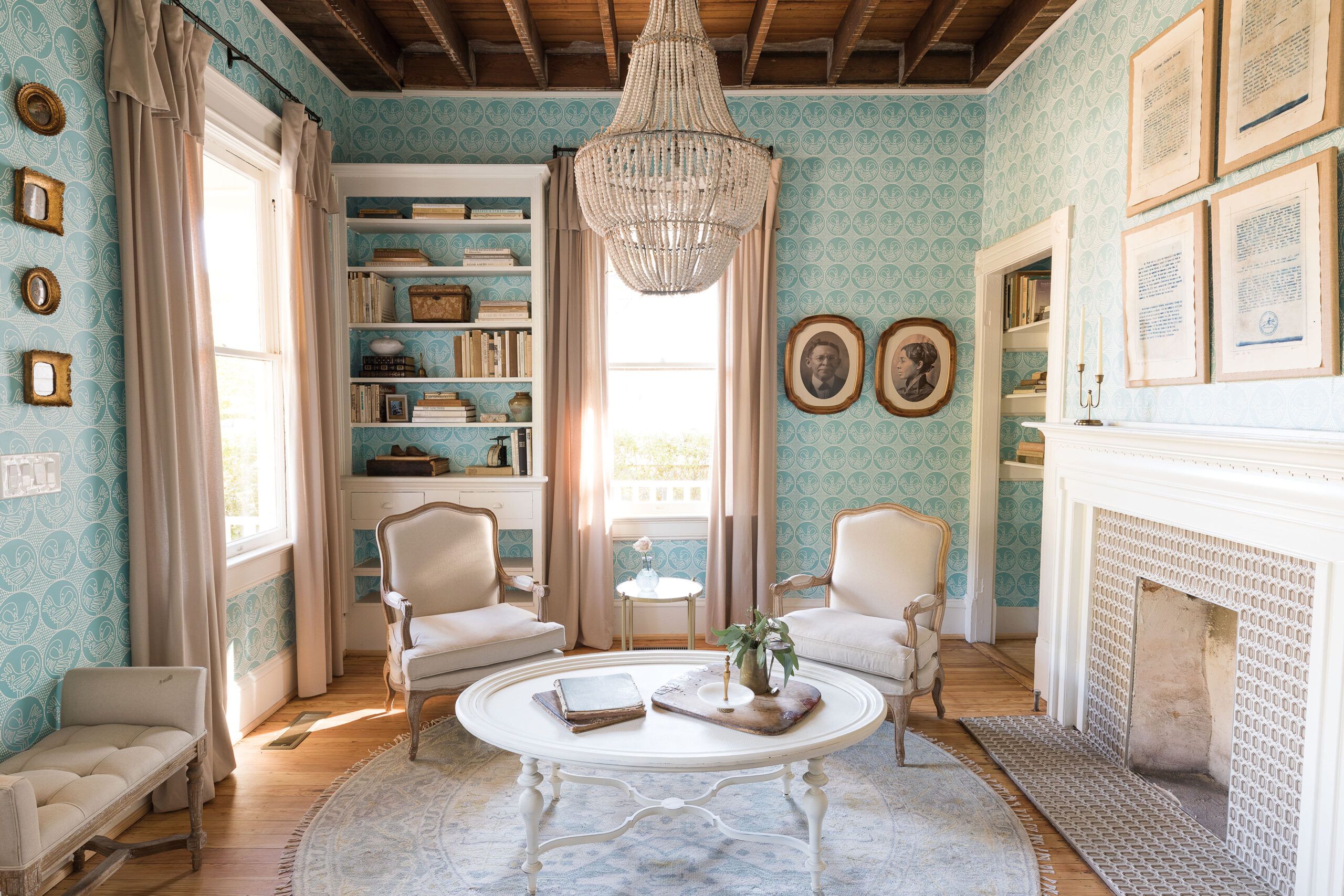
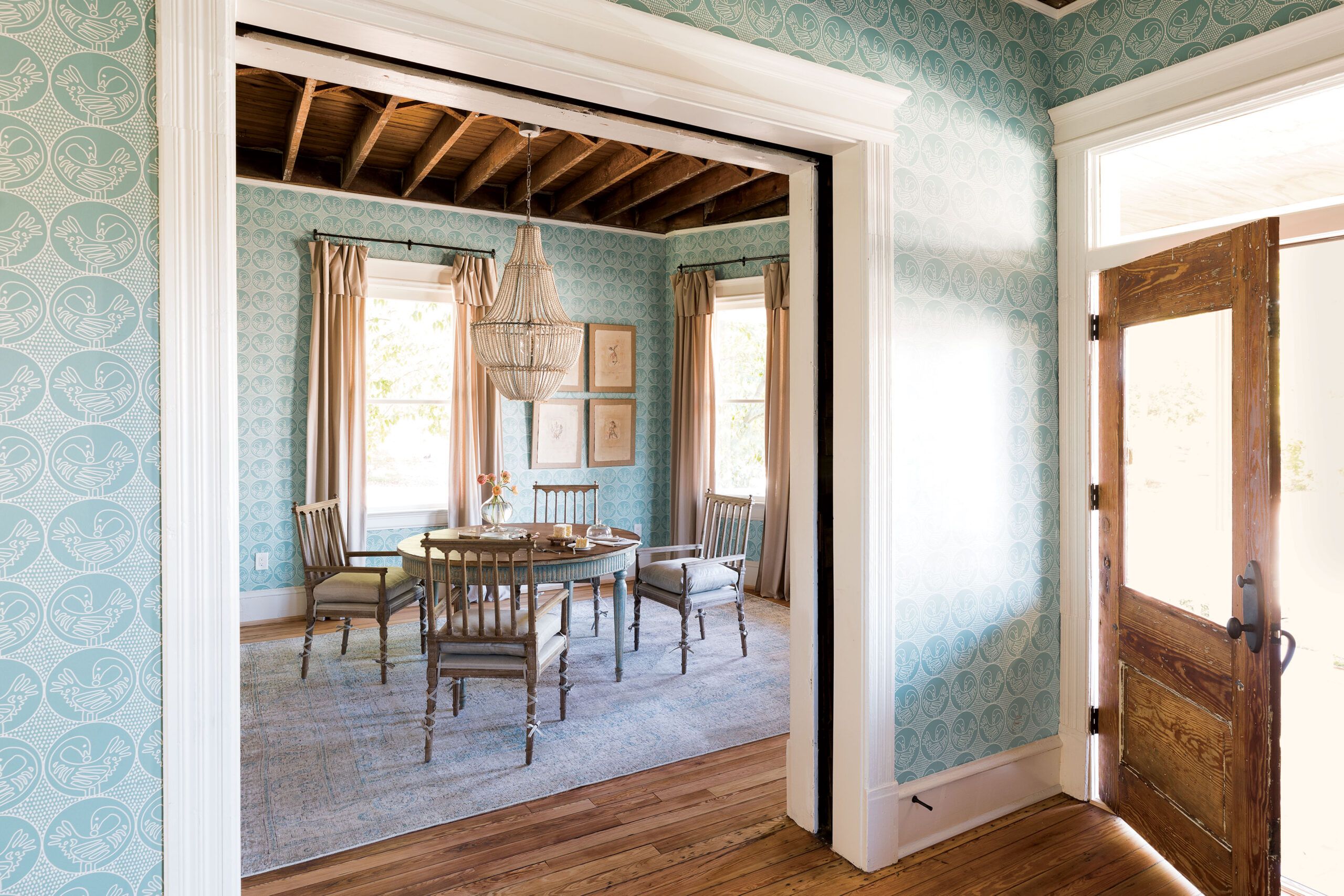
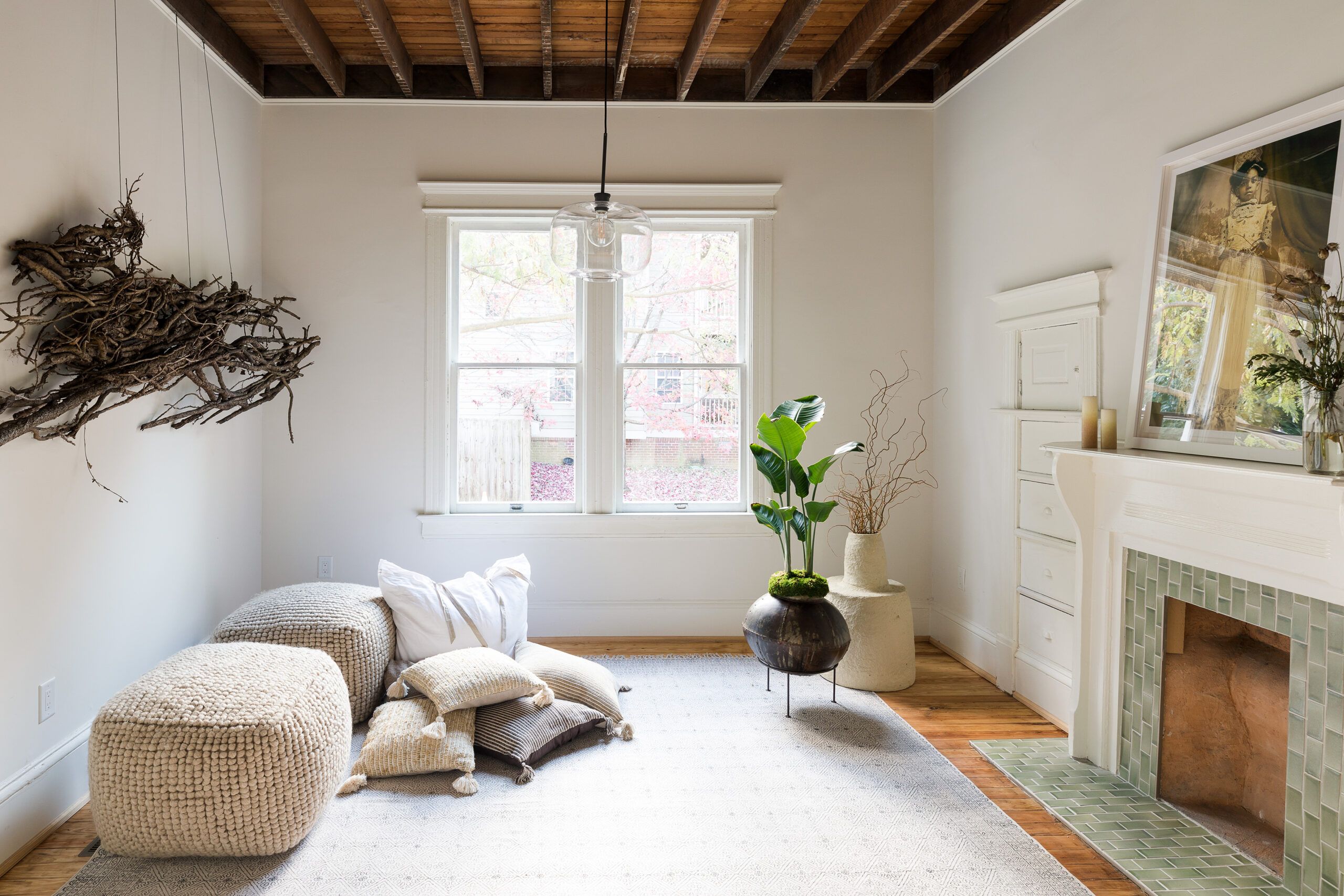
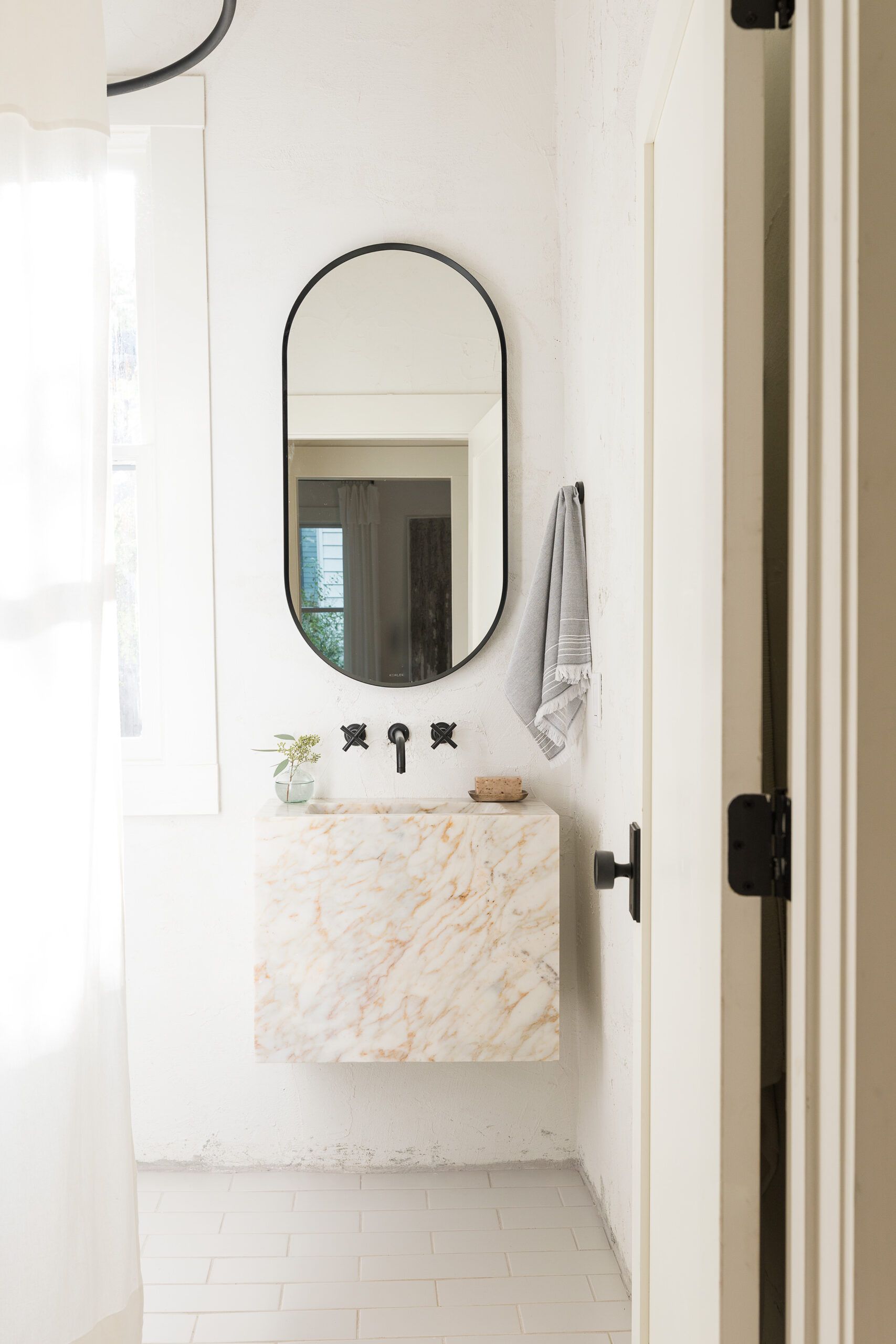




The Hehns pay homage to the Prices in the front rooms of the house—now a dining room and a parlor—which retain their original footprint. Price-family memorabilia, including the postmaster’s scale presented to them by Price’s grandson, fill the walls and built-ins. With the damaged plaster repaired, Kysha approached local designers Monet Masters and Tavia Forbes to create a custom wall covering incorporating two meaningful elements: a blue-green background that echoes the color of wallpaper remnants revealed when the drop ceilings were removed, and an African motif, the Sankofa bird, that represents learning from the past. The finished wallpaper now brightens the front entry and adjoining rooms, which also feature original fireplaces and exposed ceiling joists, serving as a reminder of the house’s age and history.
The decision to preserve some imperfect elements as a connection to the past is evident upstairs as well, where a wall near the stairs showcases a swath of plaster with layers of old paint, hallway floorboards kept their gaps and cracks, and one of Joia’s bedroom walls displays the opening where an old stovepipe once functioned. “We purposely didn’t fix everything,” says Jonathan.“We love those bits of history peeking through.”
A necessary improvement for comfort and energy efficiency is the new two-zone forced-air HVAC system, which brought air-conditioning to the house for the first time. Two 3-ton heat pumps provide heating and cooling in a system that Jonathan helped install by running the flexible ductwork in the attic and basement. “The house feels generous, but there is not much mechanical space in it,” says TOH plumbing and heating expert Richard Trethewey, referencing the basement crawl space.
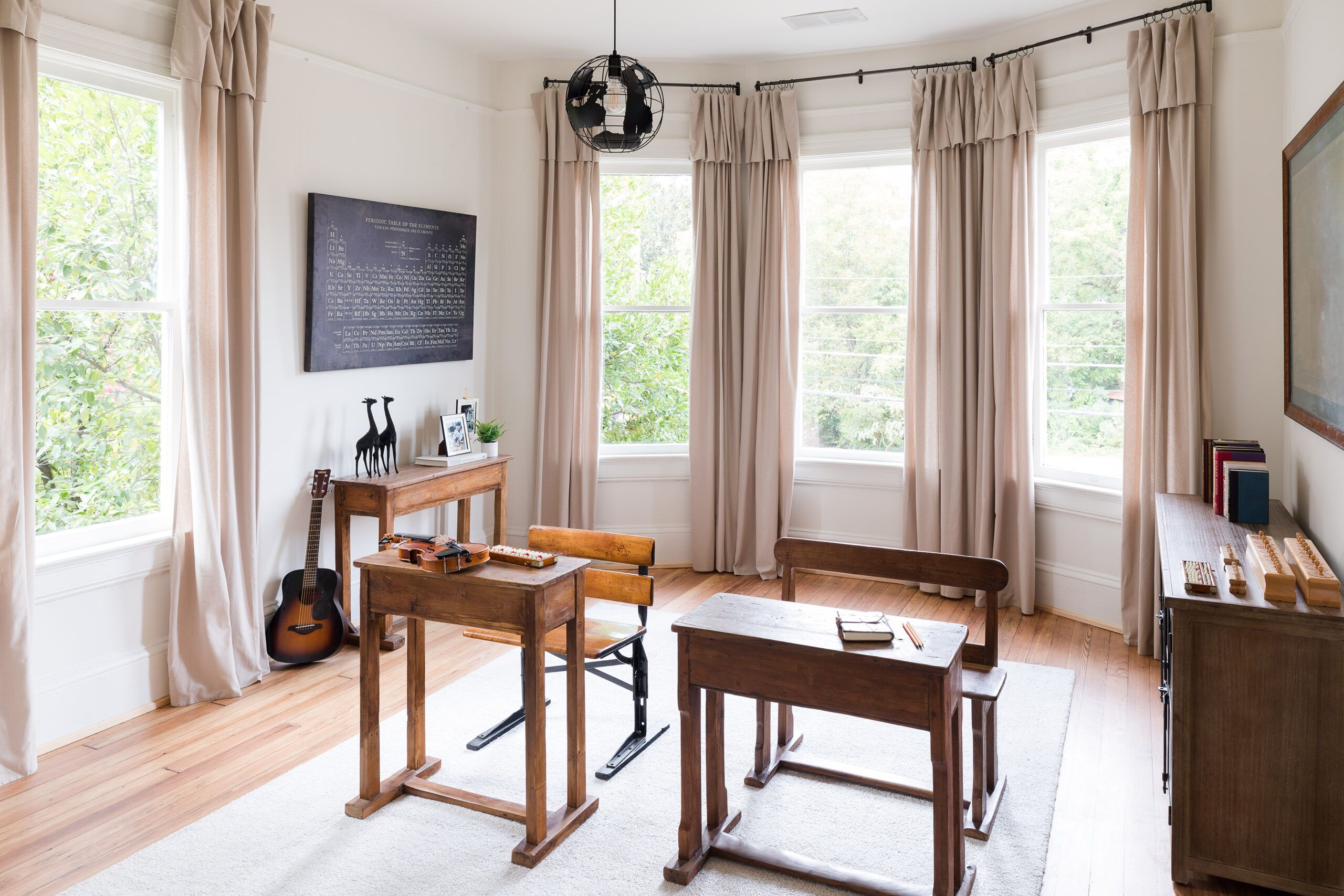
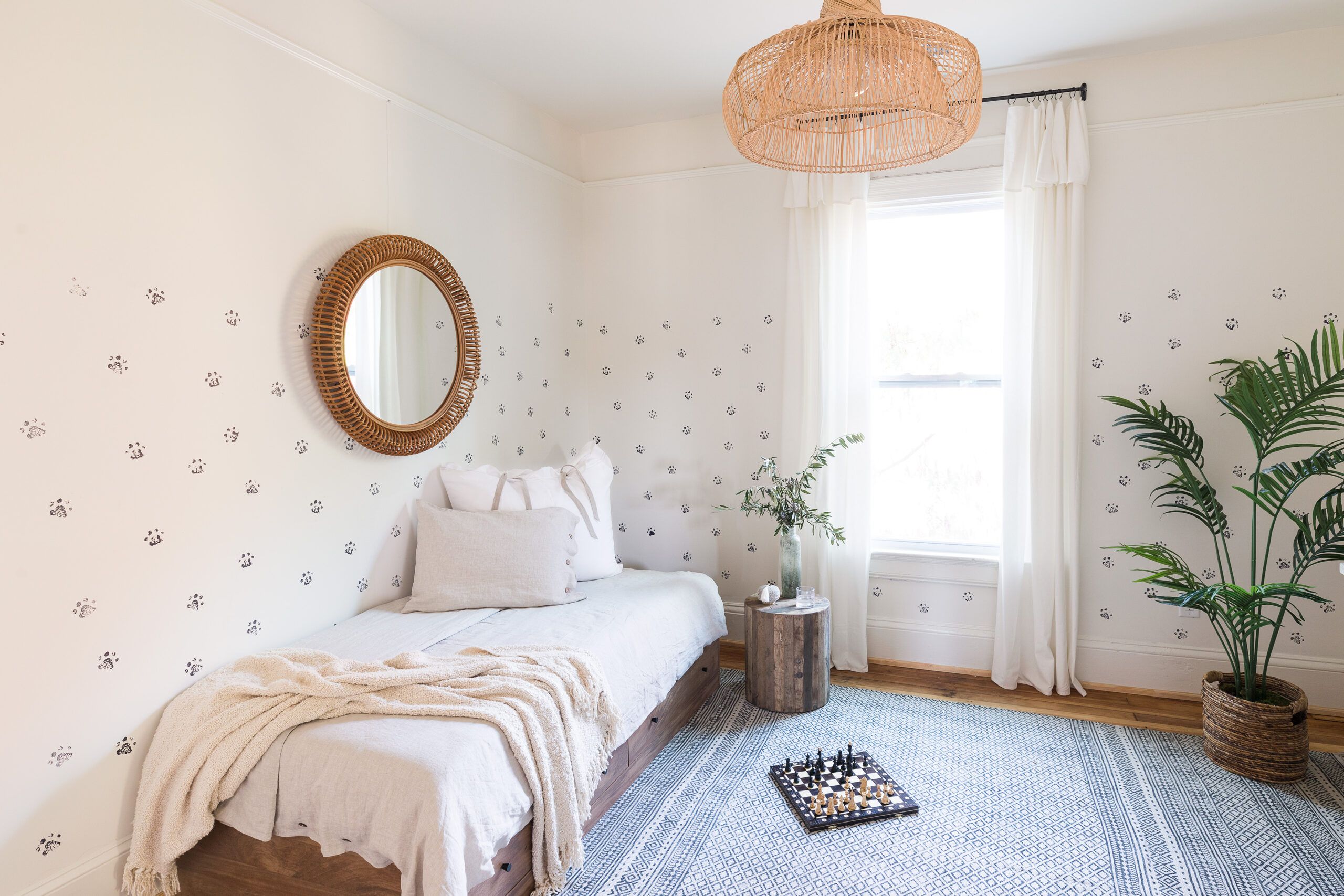
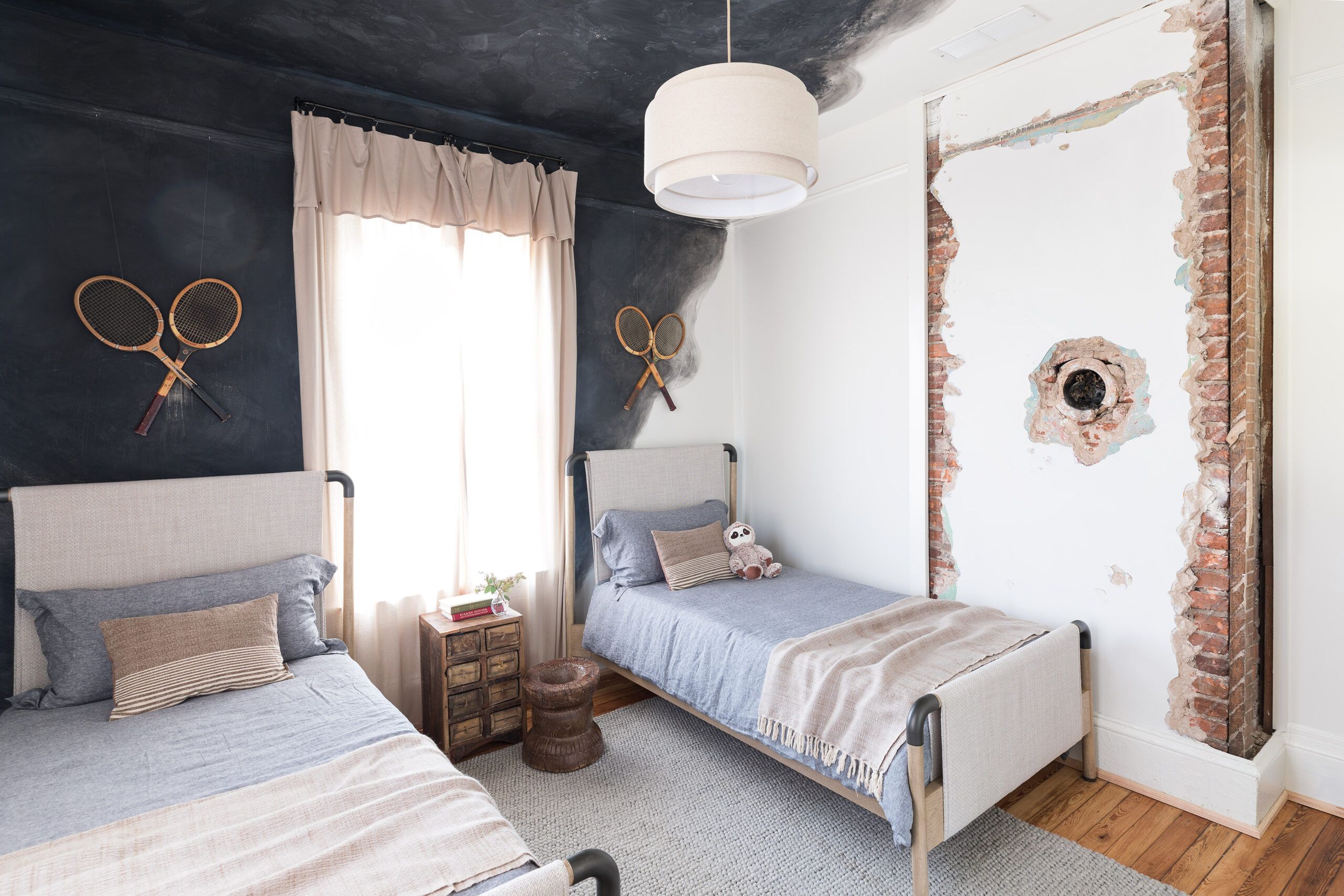
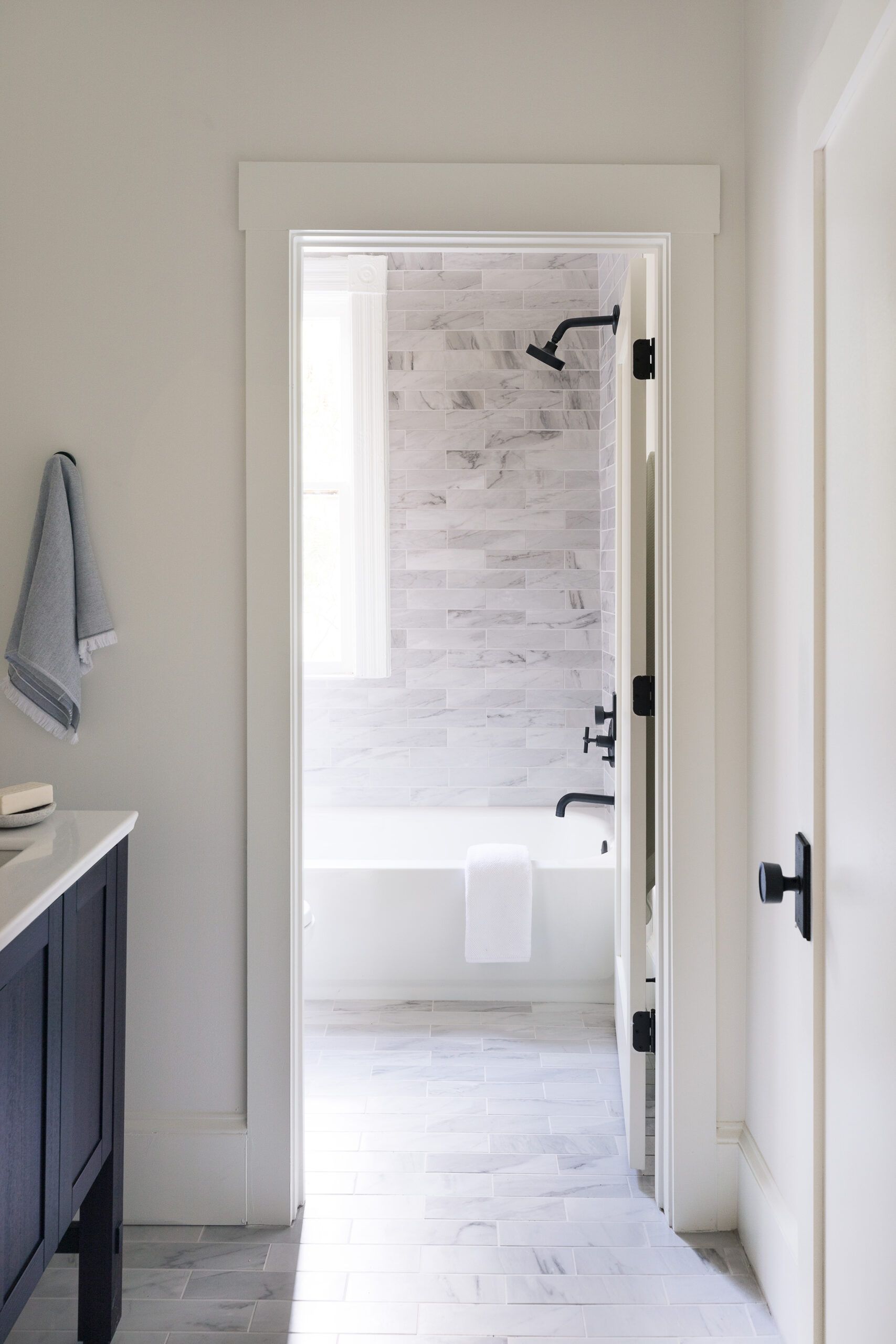
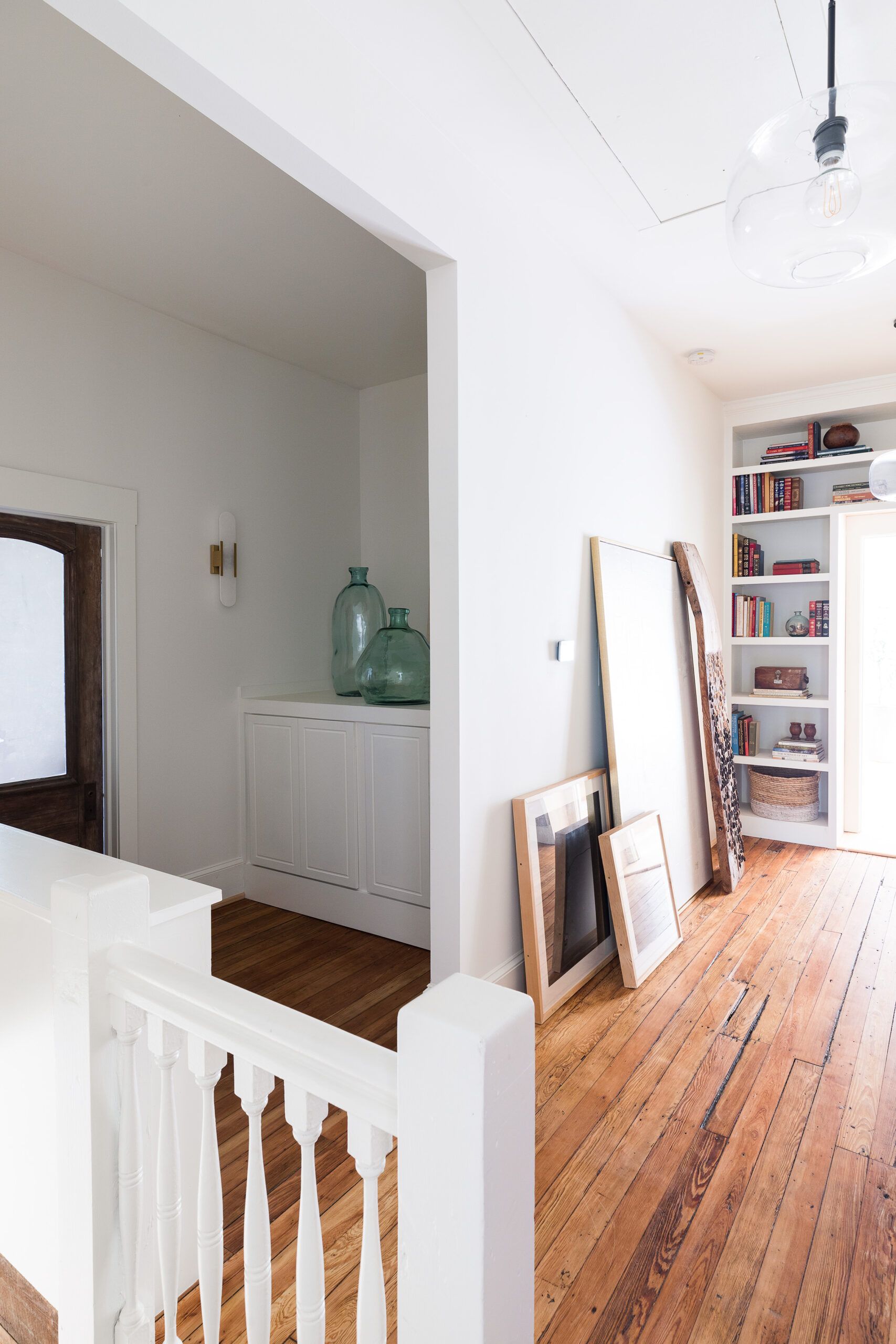





The family’s second-floor sanctuary includes a homeschool room: Kysha has taught the children at home for the last five years. Alivia Sage and Joia chose the bay-windowed room at the front of the house for its abundant natural light and claimed existing bedrooms adjacent to it for their own. Kysha envisions the hallway leading from their bedrooms to the primary suite as a gathering place for them to play games. The primary suite has a minimalist aesthetic. “The neutral color palette and natural materials create a calm and ethereal space,” says interior designer Theresa Ory.
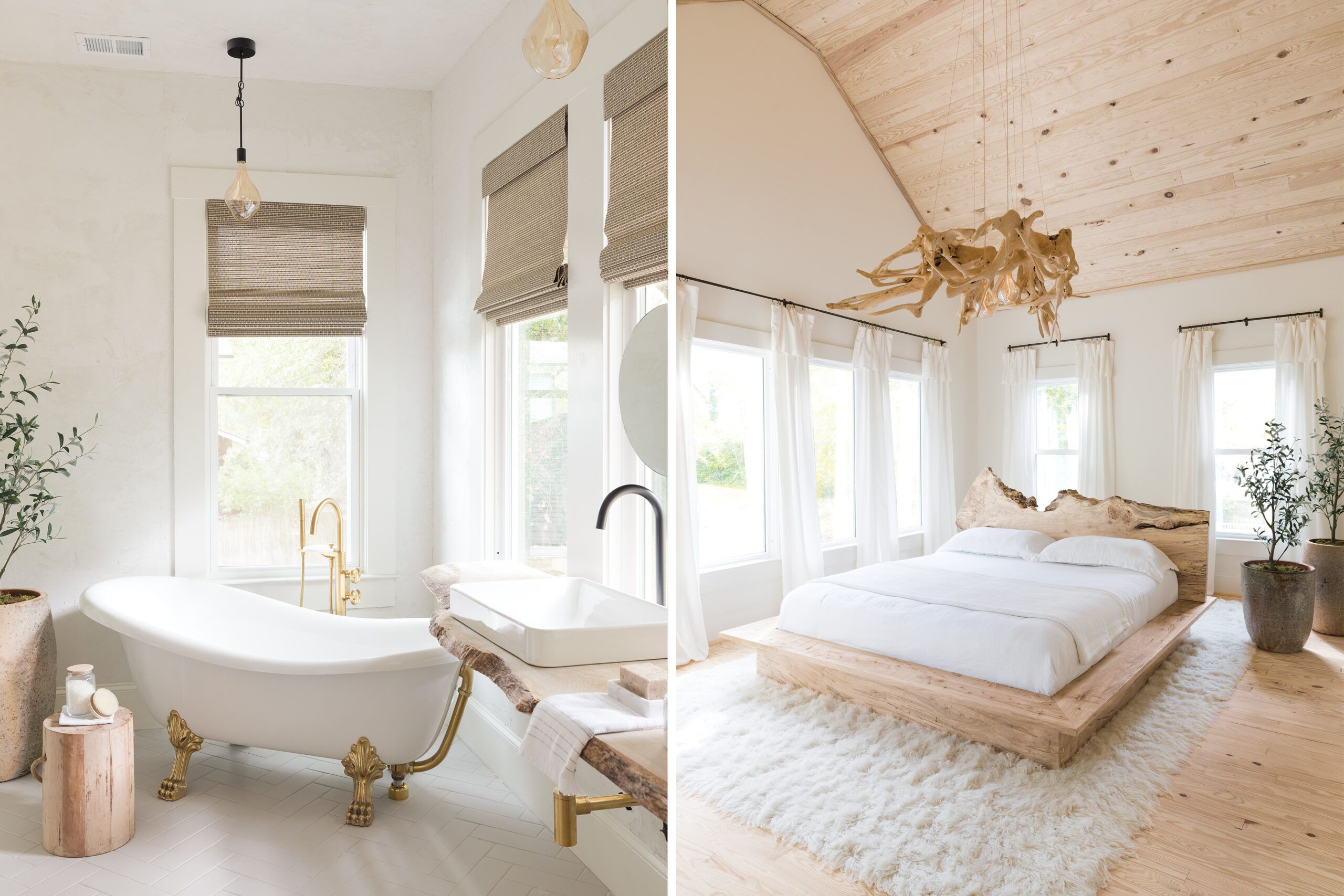
Outdoors, Kysha created a learning area in the backyard, collaborating on the design with TOH landscape contractor Jenn Nawada. The space includes a greenhouse classroom, a shelter for chickens and rabbits, creative spaces for art and music, and a lectern carved from a tree trunk.
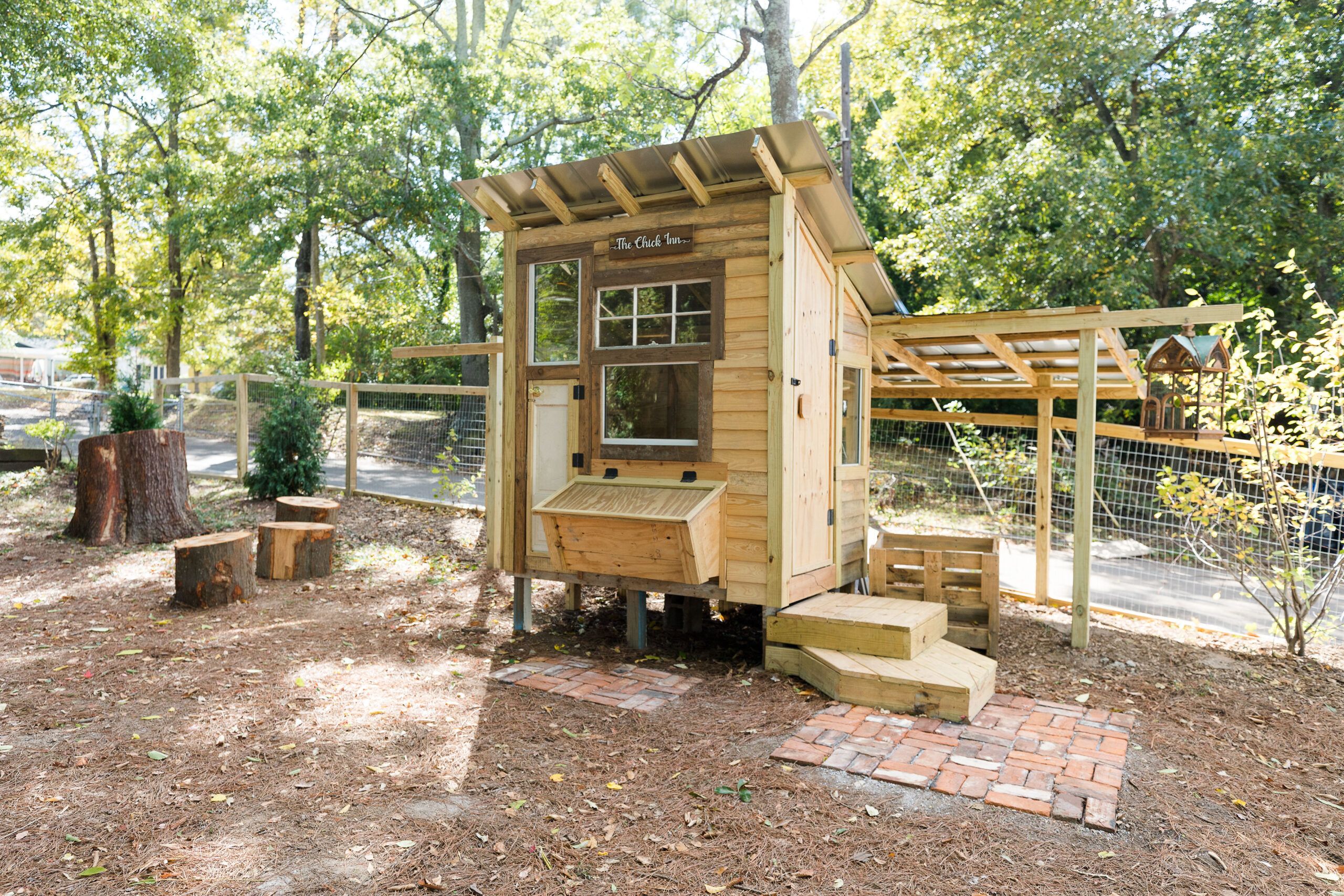
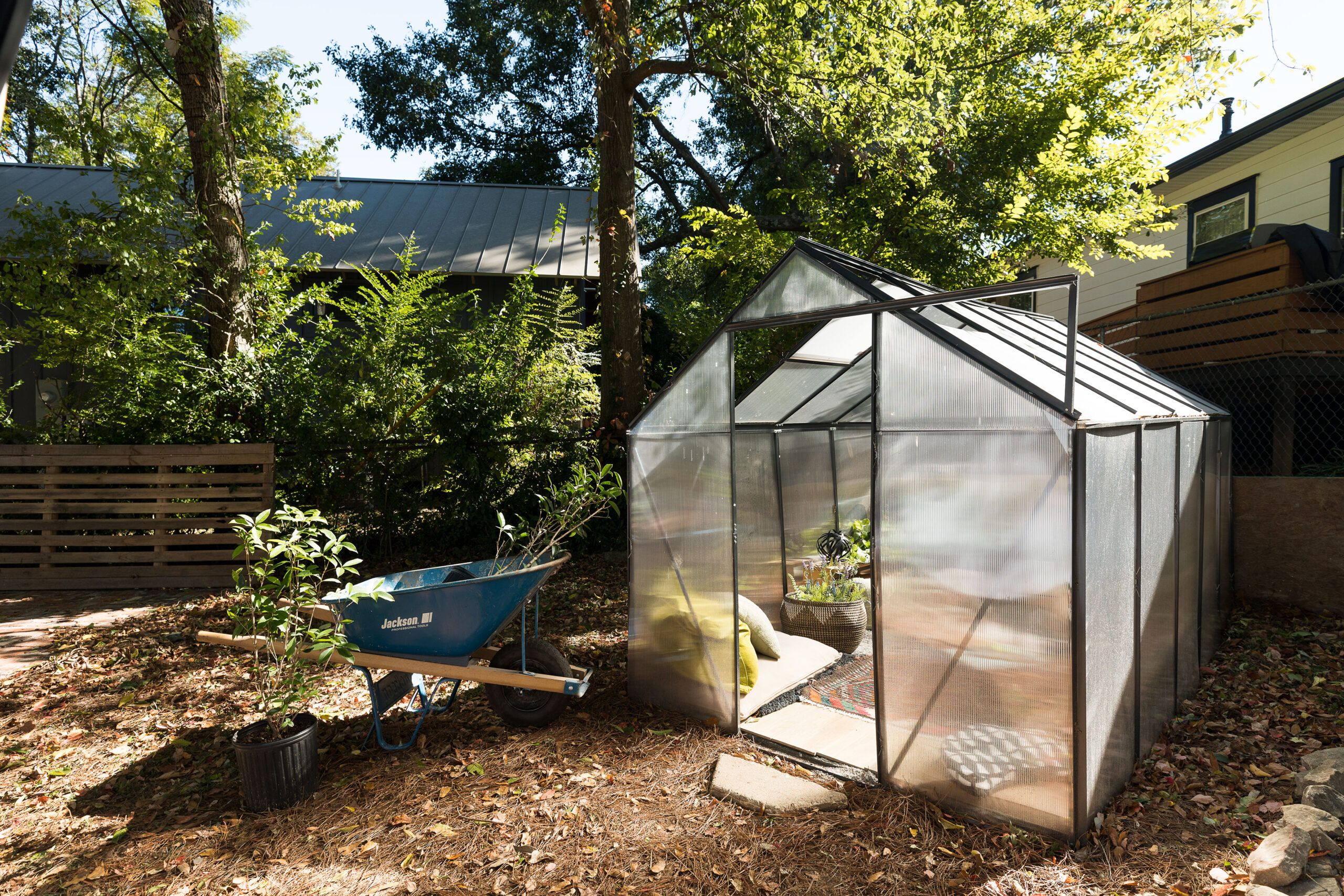
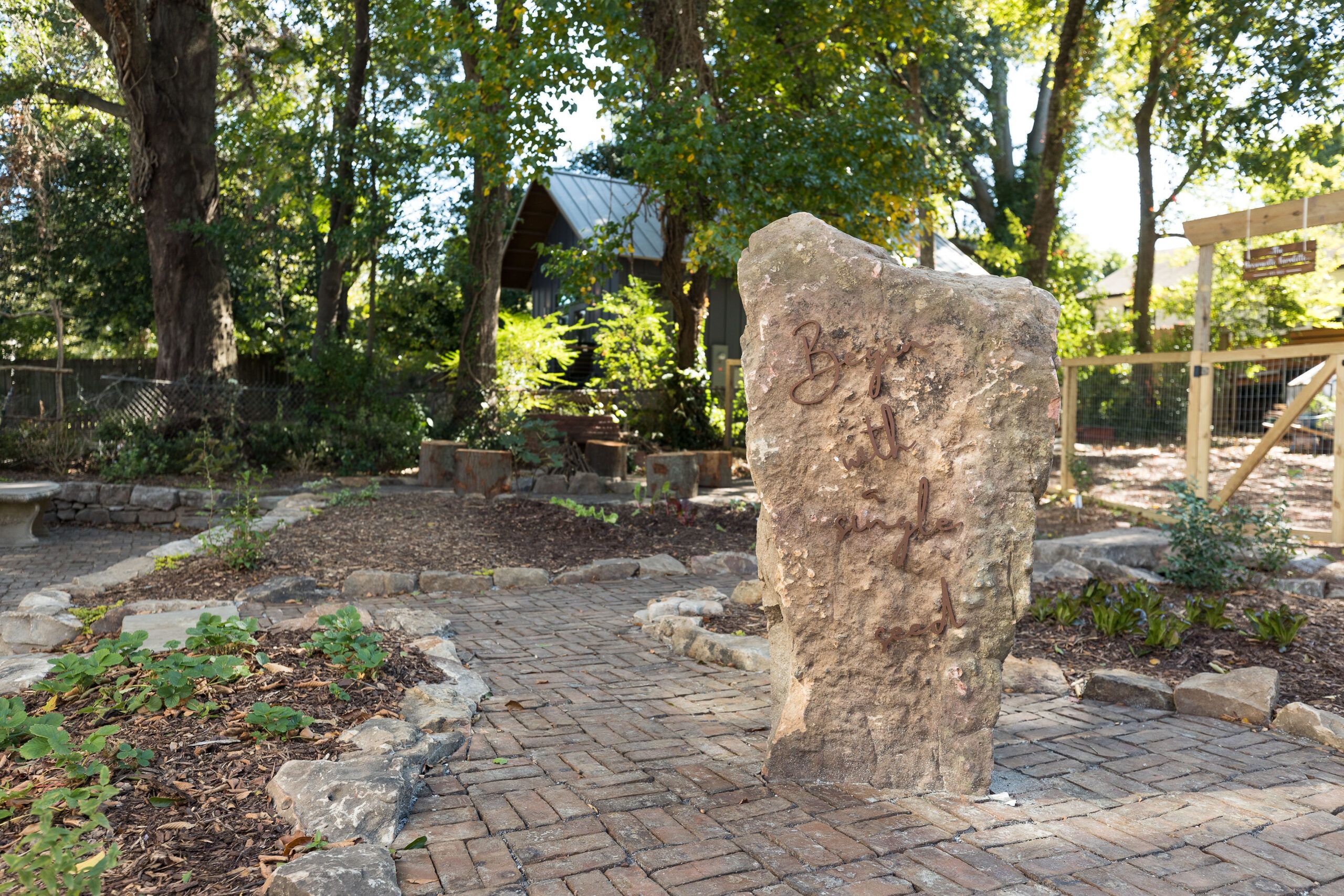
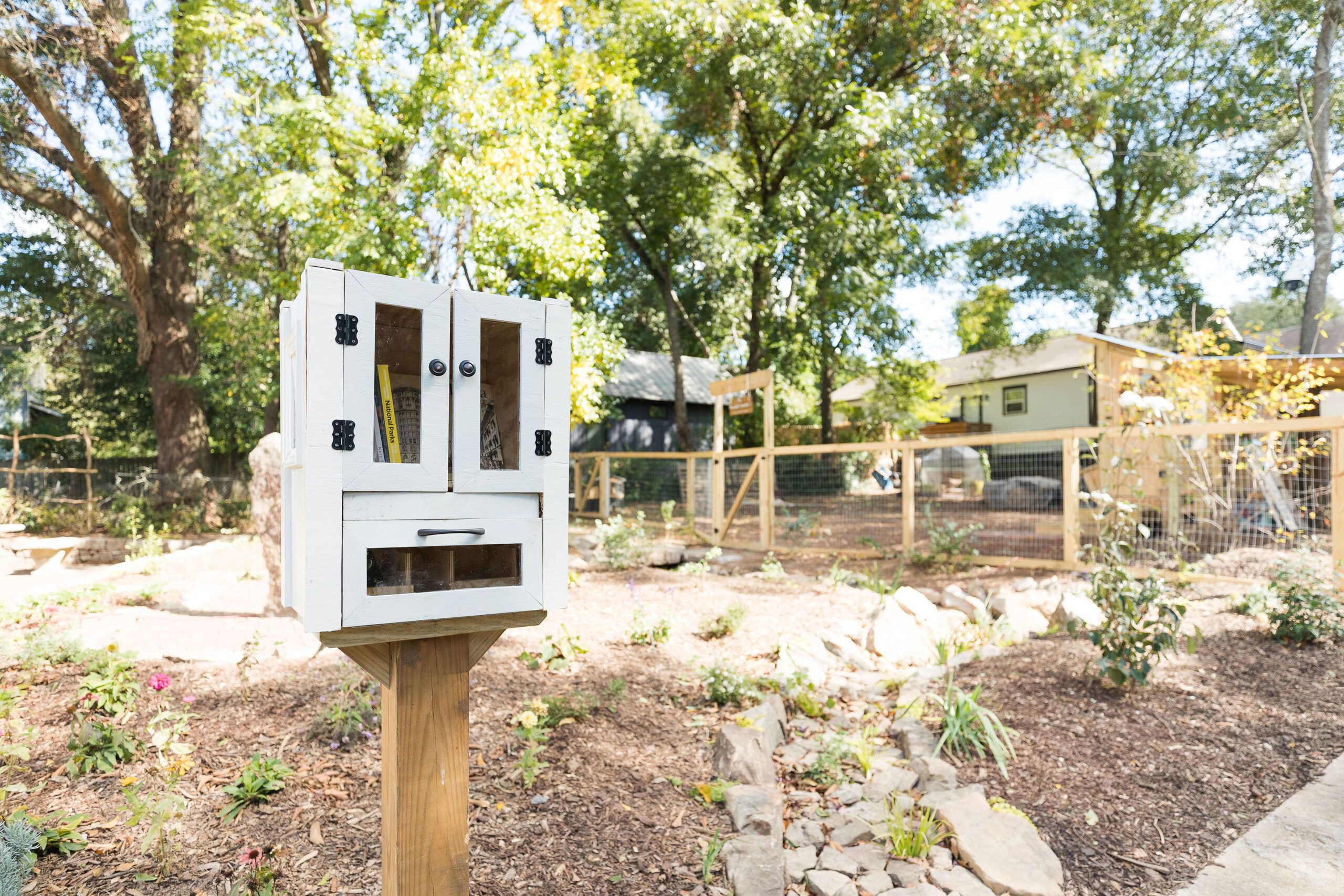
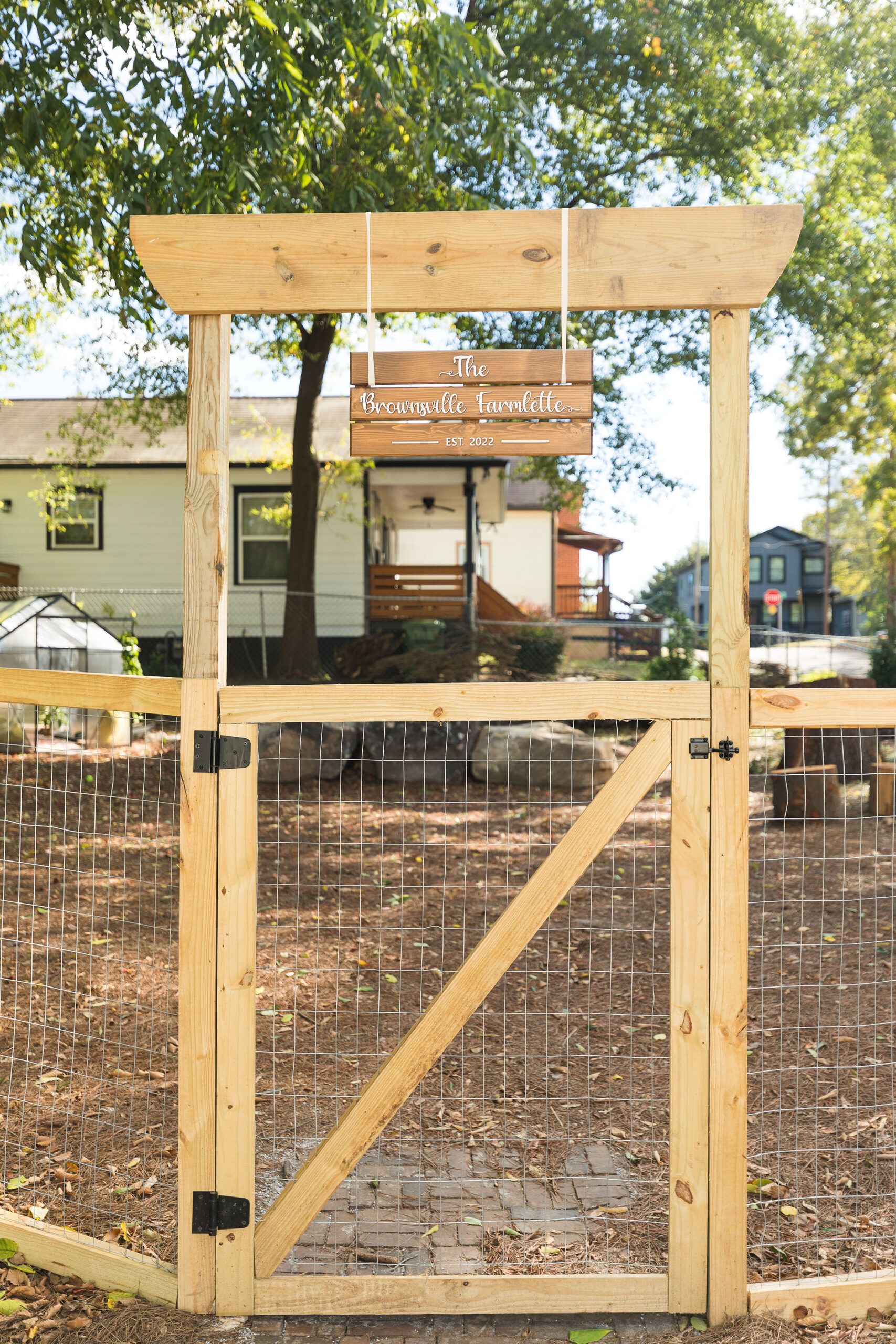
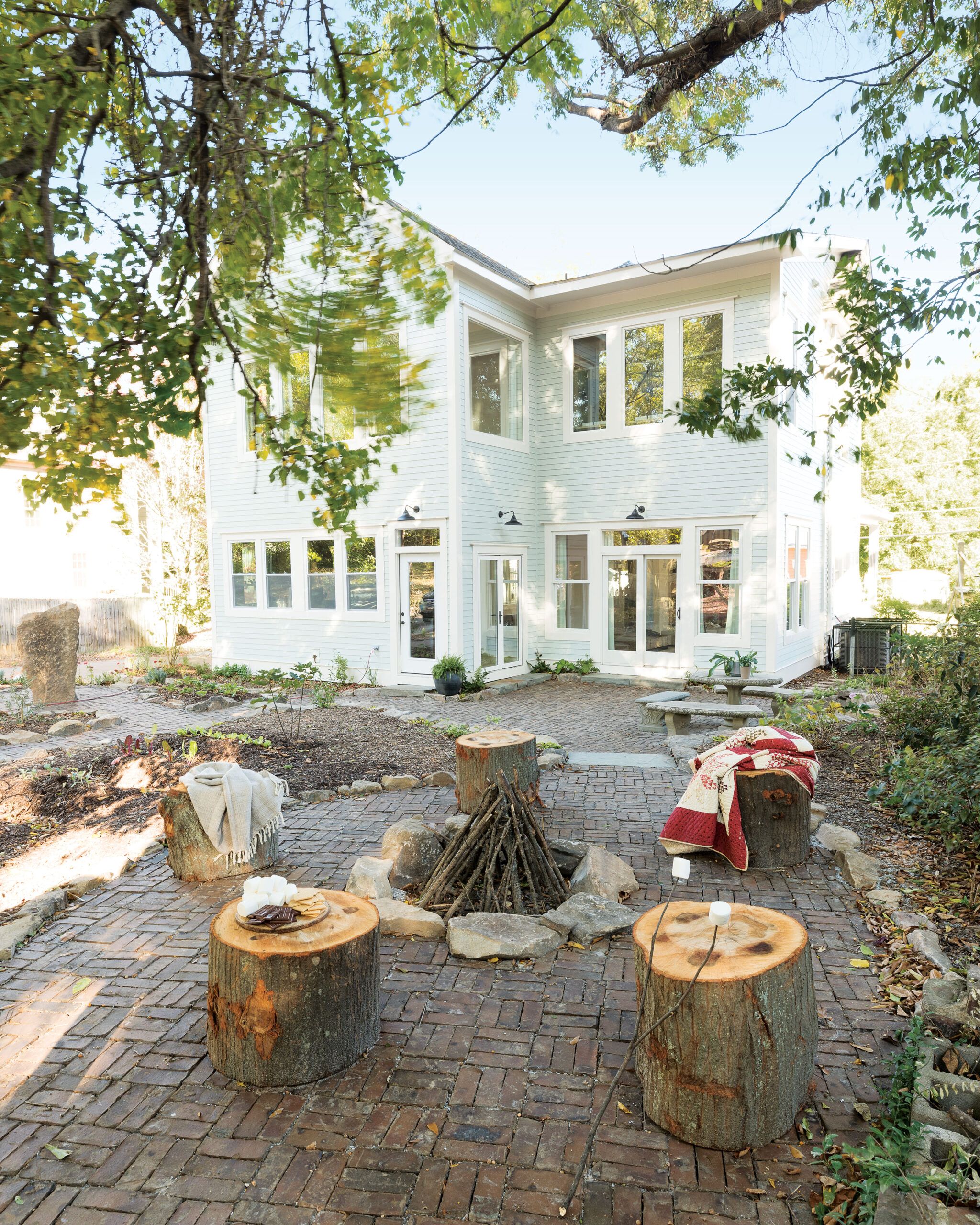






The house’s exterior showcases the team’s many efforts to reuse and improve, including hand scraping and patching the original pine clapboards, then painting them a soft gray that is similar to what is seen in old photographs. In front, Davis rebuilt the rotted porch, reorienting the boards front-to-back, to shed water. While the heavy lifting of the renovation is done, Kysha says the process of restoring the home’s spirit is just beginning. She feels most at peace in the rooms that honor the Price family.
“In the other portions of the house, I feel compelled to do what the space calls for. In the kitchen, you prepare meals, in the bedroom you rest, but in the Sankofa rooms, you reflect, you dream, and you are simply present.”
TOH’s 1890s Postmaster House Floor Plans
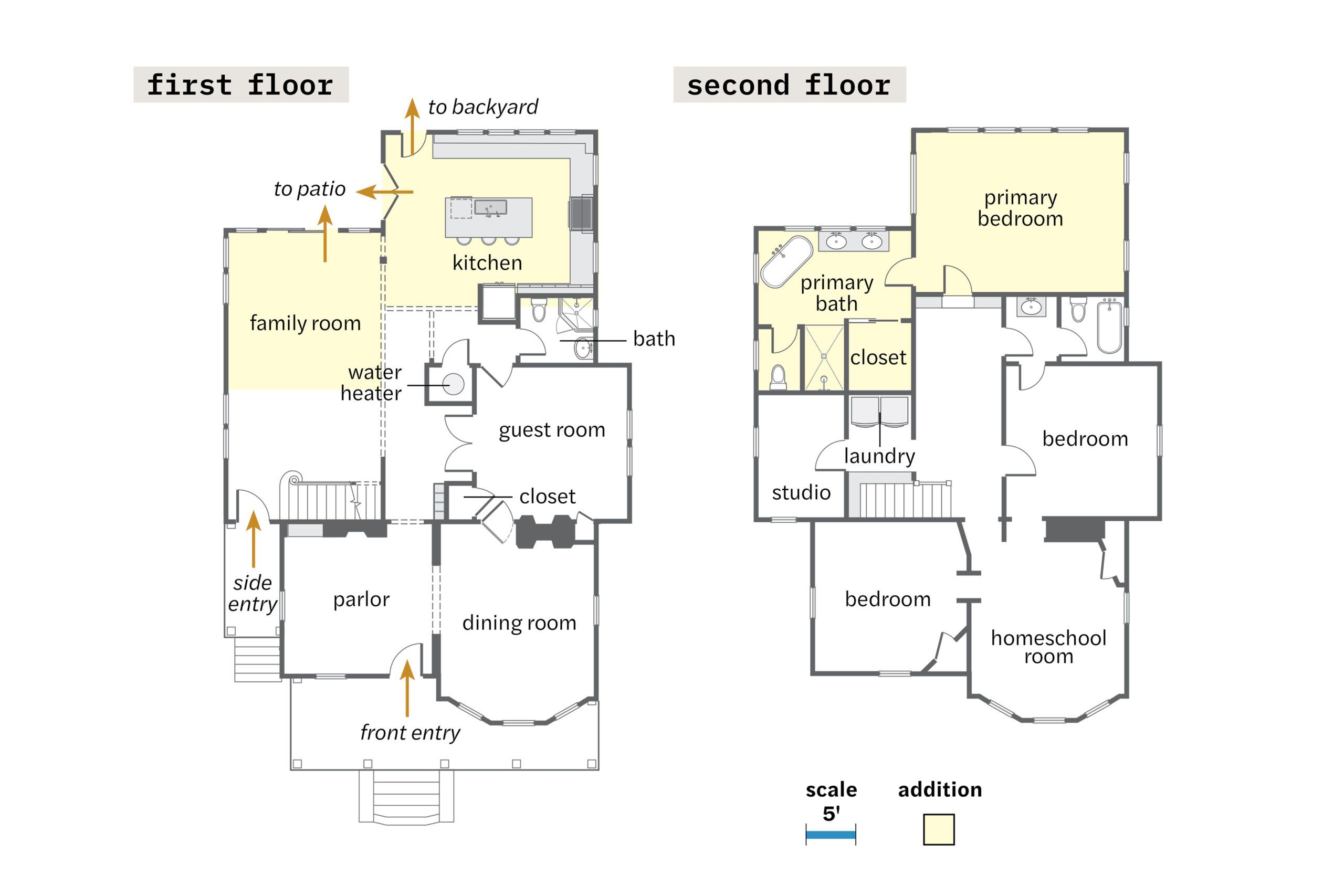
The front rooms of the 3,000-square-foot house retain their original footprint, with a dining room, parlor, and future guest room downstairs and two bedrooms, a homeschool room, and a studio upstairs. The rear addition replaced two previous additions that had to come down. It holds a family room and kitchen on the first floor.
Three sets of doors leading out from the kitchen–family room establish a strong connection to the outdoors. The primary suite, with views of the backyard, fills out the second floor. The upstairs hallway doubles as a gathering space for the kids; an alcove off the hall has base cabinets with a washer/dryer.
